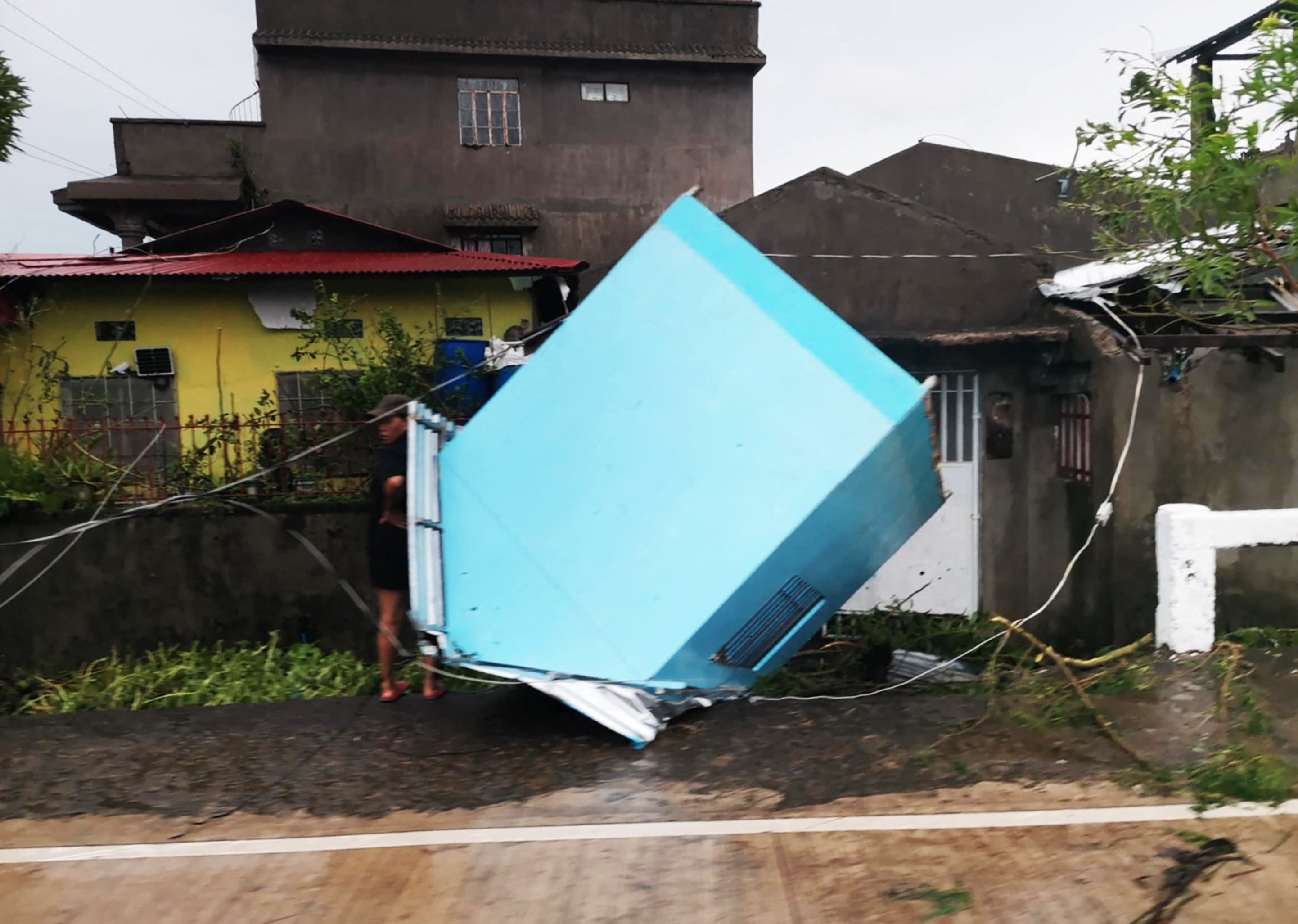More than 400,000 evacuated as Super Typhoon Man-yi batters Philippines
Super Typhoon makes landfall with sustained winds of up to 125mph, destroying houses and powerlines on its path

More than 400,000 people in the Philippines were forced to flee their homes as powerful typhoon Man-yi slammed into the eastern island province of Catanduanes wrecking houses and causing towering tidal surges.
The storm made landfall on Saturday night with sustained winds of up to 125mph and gusts of up to 149mph. The country's weather agency had warned of a "potentially catastrophic and life-threatening situation" in provinces along its path.
Man-yi, locally known as Pepito, weakened slightly after hitting land to arrive over the coastal waters of Camarines Norte province by 8am (local time) on Sunday, the Southeast Asian country's weather agency said.
Catanduanes was left without power after the storm knocked down trees and electricity posts, and disaster-response teams were checking how many more houses were damaged in addition to those impacted by previous storms, he said.
There were no immediate reports of casualties from the typhoon, which was forecast to further blow north-westwards across northern Luzon. "Significant weakening will occur during the passage of this tropical cyclone over mainland Luzon today," the weather agency said.
President Ferdinand Marcos Jr had asked his cabinet and provincial officials to brace for "the worst-case scenario".
"We need tin roofs and other construction materials, aside from food. Villagers tell us here that they still haven't gotten up from the past storm and were pinned down again by this typhoon," Roberto Monterola, a disaster-mitigation officer in Catanduanes, told the Associated Press.

“Along a main boulevard here, the tidal surges went up to more than 23ft near the seaside houses. It looked really scary," he said.
Nearly half of the island province's 80,000 people were sheltering in evacuation centres, the authorities said.
More than 400,000 people heeded evacuation orders and took shelters at schools, malls and other evacuation centres, officials said. "It is more dangerous now for those in landslide-prone areas because the ground has been saturated by the consecutive typhoons," Ariel Nepomuceno, the head of the civil defence was quoted by BBC as saying.

At least 26 domestic airports and two international airports were temporarily shut and inter-island ferry and cargo services were suspended due to rough seas, stranding thousands of passengers and commuters, according to the country's civil aviation authority.
An estimated 750,000 people have taken refuge in shelters due to Man-yi and two previous storms mostly in the northern Philippines, officials said.

About 20 tropical storms strike the Philippines each year on average, bringing heavy rain, strong winds and deadly landslides. In October, floods and landslides brought by Tropical Storm Trami and Typhoon Kong-rey killed 162 people with 22 missing, government figures show.
In 2013, Typhoon Haiyan, one of the strongest recorded tropical cyclones, left more than 7,300 people dead or missing, flattened entire villages and caused ships to run aground and smash into houses in the central Philippines.
Additional reporting by agencies
Join our commenting forum
Join thought-provoking conversations, follow other Independent readers and see their replies
Comments
Bookmark popover
Removed from bookmarks